
India

Agarwal Law Associates
Agrud Partners

Ahlawat & Associates

AK & Partners
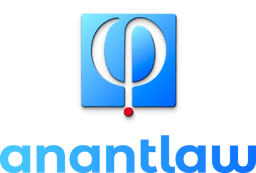
AnantLaw
ANB Legal
AP & Partners

AQUILAW

Argus Partners
Ashlar Law

Ashwathh Legal

ASP ADVOCATES
Aura & Co. (Advocates & Law Consultants)
Beruar & Beruar

Bharucha & Partners
BMR Legal

Bombay Law Chambers

BRUS CHAMBERS, Advocates & Solicitors

Chadha & Chadha IP
Chadha & Co

Chandhiok & Mahajan, Advocates and Solicitors

Clove Legal

Cyril Amarchand Mangaldas

Dentons Link Legal
Desai & Diwanji

Dhaval Vussonji & Partners
Dhir & Dhir Associates
Dhwaj & Associates

DMD Advocates

DSK Legal

Dua Associates

Economic Laws Practice

Finsec Law Advisors
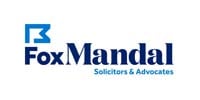
Fox Mandal & Associates

Gagrats

Ganesan Manuraj LLP

Gnanlex Associates LLP

Goswami & Nigam LLP

Gravitas Legal

Hammurabi & Solomon Partners
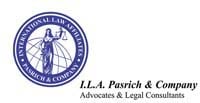
I.L.A. Pasrich & Company
Ikigai Law

India Juris

Indialaw LLP

IndusLaw
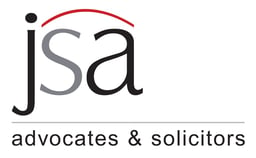
JSA Advocates & Solicitors
Juris Arena

Juris Corp

Juris Legal
Juris Prime Law Services

Kachwaha & Partners

Khaitan & Co.

KIAA, LLP

King, Stubb & Kasiva

Kochhar & Co.
Krishnamurthy and Co

Lahoti Advocates

Lakshmikumaran & Sridharan

Lall & Sethi
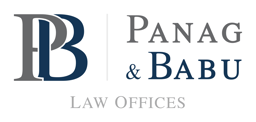
Law Offices of Panag & Babu

Law Offices of Rony Oommen John

Law Point

Legacy Law Offices

LEGALLANDS LLP

LexCounsel
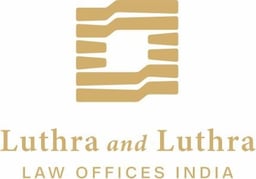
Luthra and Luthra Law Offices India

Mahendra Bhavsar & Co

Maheshwari & Co. Advocates & Legal Consultants

Majmudar & Partners

Mansukhlal Hiralal & Company
MZM Legal, Advocates & Legal Consultants

Naik Naik & Company
Obhan & Associates
Phoenix Legal

Pioneer Legal
Poovayya & Co
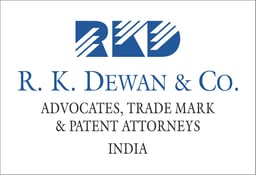
R. K. Dewan & Co.
Remfry & Sagar
Renata Partners
RNA Technology and IP Attorneys
RNClegal

Royzz & Co. Attorneys at Law

RPV Legal

S.S. Rana & Co.

S&A Law Offices

Saga Legal

Sagus Legal
Samagra Law

Saraf and Partners

Sarthak Advocates & Solicitors
SD Partners

Shardul Amarchand Mangaldas & Co

Sim And San

Singularity Legal

SNG & PARTNERS
Solomon & Co. Advocates & Solicitors

Spice Route Legal
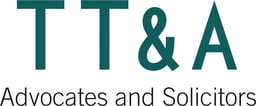
Talwar Thakore & Associates

Titus & Co
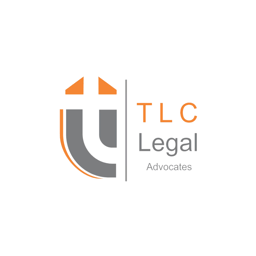
TLC Legal

TMT Law Practice

Tuli & Co

UJ LEGAL LLP
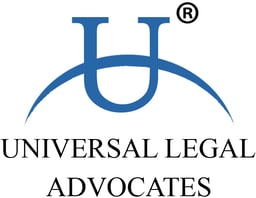
Universal Legal Advocates
Hot Topics
ViewGlobal Capability Centres: The New Drivers Of India's Commercial Real Estate
1. Introduction to Indian Real Estate Market and GCCs The growth story of India since the last decade has established the country as a premier destination for global investments and business operation...
February 14 2025
Absent But Accountable: India’s New Procedure For Trials In Absentia
Authors: Mr. Sandeep Devashish Das, Ms. Kanak Malik, Mr. Tanishq Juneja The legacy of Lord Macaulay was overturned on 1 July 2024 when the Indian Penal Code, 1860 (“ IPC ”), the Indian Evidence Act, 1...
September 12 2024
News & Developments
ViewPress Releases
Saga Legal Expands TMT Disputes Practice with the Addition of Vara Gaur as Partner
Saga Legal has recently announced the appointment of Vara Gaur as a Partner in the Litigation & Dispute Resolution practice. Vara will lead disputes related to Technology, Media & Telecom (TMT), given her extensive experience in technology-driven commercial litigation, platform liability, data privacy, and arbitrations.
A graduate of the Faculty of Law, University of Delhi, Vara also holds a BBA degree from Amity University. Over the years, she has represented a wide spectrum of clients, from global technology majors to Indian digital startups, in complex, high-stakes disputes before the Supreme Court of India, various High Courts, arbitral tribunals, and sectoral regulators. She is also adept at navigating sensitive matters involving online content, intermediary regulations, and the evolving data protection frameworks.
Welcoming her to the firm, Gaurav Nair, Managing Partner, said, “Vara is a welcome addition to the firm’s disputes practice and will be focusing primarily on further deepening our technology litigation practice. She has a comprehensive understanding of the technology and data protection landscape, which is the need of the hour, given the nuanced ways these sectors are evolving. We are looking to further deepen our work in these areas, backed by the breadth of her expertise and experience.”
Sharing her thoughts on joining Saga Legal, Vara said, “Joining Saga Legal feels like the right step at the right time. The firm’s ambition, agility, and collaborative culture resonate strongly with me. I am particularly excited to build a specialised TMT disputes practice.”
Founded in 2016, Saga Legal is a multi-service law firm with a strong presence in New Delhi, Bengaluru, and Mumbai, advising a diverse clientele on matters ranging from corporate-commercial advisory and transactions to complex litigation and regulatory compliance. The firm’s founding philosophy is rooted in clarity, collaboration, and client-first solutions, and its lawyers are known for their strategic acumen across sectors including fintech, infrastructure, energy, healthcare, and now, technology and media.
Saga Legal - June 30 2025
FIR and ECIR in Financial Crimes: Parallel Investigations with Overlapping Implications
A. Introduction
In the year 1834, the first Indian Law Commission was constituted under the Chairmanship of Lord Thomas Babington Macaulay to examine, inter alia, the existing laws in force in India at that time. The Commission’s recommendation led to the eventual enactment of the Indian Penal Code in 1860. The aim was to substantively define various offences and their subsequent punishments. Subsequently, a separate Code of Criminal Procedure was enacted which came into force in 1973. The Code enshrined the gamut of various procedures which governed the registration of criminal cases, the process of investigation by law enforcement agencies, and thereafter the process of trial. These laws remained largely unchanged for about a century and a half, till the recent overhaul of criminal laws by the present government. Thereby, introducing the Bharatiya Nyaya Sanhita, 2023 (BNS, 2023) to replace the Indian Penal Code, 1860 and the Bharatiya Nagarik Suraksha Sanhita, 2023 (BNSS, 2023) to replace the Code of Criminal Procedure, 1973.
Be that as it may, the aforesaid penal statutes are generic in nature and largely encompasses all forms of crimes. However, over the years there has been a substantial increase in commission of various financial crimes across the nation. Such financial crimes include illegal activities like fraud (such as accounting, insurance, securities fraud, etc.), money-laundering, Ponzi schemes, counterfeiting, amongst others. To tackle this growing domain of financial crimes, the legislature introduced the Prevention of Money Laundering Act, 2002 (PMLA, 2002) to specifically curb money-laundering as an offence as well as provide provisions for arrest, attachment, and recovery of tainted assets. Therefore, the PMLA, 2002, unlike the BNS, 2023, and the BNSS, 2023, is a comprehensive legislation which comprises both, the substantive as well as the procedural law.
While the intent of the legislature was to create a special statute in the form of PMLA, 2002, to tackle specific financial crimes, this unfortunately led to creation of parallel investigations conducted by separate law enforcement agencies, stemming from a common crime. This is because, on one hand, the police and/or a specialized investigating agency like the Central Bureau of Investigation (CBI) investigates the original crime, which in legal parlance is known as a predicate offence or a scheduled offence. On the other hand, any tainted money (black money) which is generated on the basis of the original crime, is investigated under the PMLA, 2002, by the Enforcement Directorate (ED). While the legislature intended that the specialized statute, i.e., PMLA, 2002, would streamline and fine tune the process of investigation, arrest, attachment, and recovery of tainted money, the real-world implications of overlapping jurisdictions created by parallel investigating agencies have led to unintended consequences. Such discrepancies and issues arise right from the very initiation of investigation by registration of a First Information Report (FIR) as per the BNSS, 2023 pertaining to a predicate offence vis-à-vis an Enforcement Case Information Report (ECIR) pertaining to an offence committed under the PMLA, 2002.
This update aims to highlight various overlapping implications of dual/parallel investigations being conducted by separate law enforcement agencies arising from the same focal point. It further aims to set out the legal architecture of the PMLA, 2002, and the nature of an ECIR, contrasting it with the traditional role of an FIR. It then explores landmark judicial pronouncements that have either reinforced or questioned the legitimacy of such parallel proceedings. Through real-life case studies like Benoy Babu’s prolonged custody, this update highlights the inconsistencies and operational dilemmas that arise from uncoordinated investigative processes. Finally, it concludes with recommendations for reform, including statutory clarity on ECIRs and proposals for a more streamlined inter-agency framework.
B. Understanding the Legal Framework
I. PMLA: A General Overview
As stated above, the PMLA, 2002, is a special legislation enacted with an objective to identify, detect, and penalize offences related to the laundering of proceeds of crime. To facilitate this, officers of the ED have been entrusted with significant investigative powers, including arrest, custodial remand, search and seizure of property and persons, among others.
The PMLA, 2002 criminalizes all dealings relating to the “proceeds of crime,” a term broadly defined under Section 2(1)(u). The term “proceeds of crime” refers to any property, like money, land, or assets, among other things, that someone has derived or obtained, either directly or indirectly, through illegal activities relating to a predicate offence. The said act further defines the commission of the offence of money laundering under Section 3 of the PMLA, 2002, as the direct or indirect attempt to indulge, assist, or be a party to an activity connected to the proceeds of crime. The attempt could be classified as either concealment, possession, acquisition, or use of the proceeds of crime. Notably, the taint of illegality attaches to the value of the asset itself, regardless of whether it has been converted, transformed, or transferred to another person. Where the original property is taken or held outside India, the law empowers authorities to trace and attach property of an equivalent value located domestically or abroad. In effect, any pecuniary benefit arising from unlawful activity, regardless of the form it assumes, or the methods employed to disguise it, can be pursued and penalized under the PMLA, 2002.
II. Distinction between an FIR and an ECIR
The primary distinction between a FIR and an ECIR lies in their legal status, procedural requirements, and subsequent obligations for disclosure of the same. An FIR, governed by the Bharatiya Nagarik Suraksha Sanhita, 2023, is a statutory document that initiates a police investigation into a cognizable offence and must be furnished to the accused, kept in the records of a Magistrate, and the proceedings arising therefrom are conducted under judicial oversight. In contrast, an ECIR is not defined in the PMLA, 2002 and is claimed by the ED to be an internal document. Despite its status, the ECIR serves as the foundation for initiating proceedings under the PMLA, 2002 much like an FIR which forms the foundation of a criminal case under BNSS, 2023. However, unlike an FIR, it is not mandatorily disclosed to the accused, raising concerns around procedural fairness and transparency. The ED often contends that making the disclosure of an ECIR mandatory would undermine the very objectives of the 2002 Act, particularly by frustrating the attachment of property identified as proceeds of crime, and executing arrests of the suspects/accused. Since the ECIR is essentially an internal document of the ED, its non-supply cannot be construed as a violation of Constitutional rights. Another issue which arises due to the non-disclosure of the ECIR is that when a person is named as an accused in an ECIR, he/she does not get access to the allegations drawn up against him/her by the ED. Such a disadvantage does not arise with regard to the related predicate offence, which is being investigated under the BNSS, 2023, by the police authorities. However, the ED contends that the PMLA, 2002 ensures that any person arrested is promptly informed of the grounds for their arrest under Section 19 of the PMLA, 2002, thereby satisfying the requirements of Article 22(1) of the Constitution of India. At the same time, since the PMLA, 2002 provides for its own arrest procedures, the ED is not required to adhere to the guidelines laid by the Hon’ble Supreme Court in the case of Arnesh Kumar v. State of Bihar & Anr.,[1] thereby empowering it to make arrests irrespective of the term of imprisonment. As a result, the opaque and non-transparent nature of the ECIR regime, particularly its non-disclosure and disregard for judicial precedents, continues to be a point of significant legal contention and policy debate.
III. Distinction between bail under BNSS, 2023, and PMLA, 2002
One of the most debated divergences between general criminal law and the PMLA, 2002 lies in the bail regime. Under BNSS, 2023, the general principle governing bail is guided by the gravity of the offence, likelihood of the accused absconding, tampering with evidence, and other routine considerations. The presumption of innocence of the accused remains intact. Conversely, Section 45 of the PMLA, 2002 imposes what are popularly known as the “twin conditions” for bail, which are: (1) The public prosecutor must be given an opportunity to oppose the bail application; (2) The court must be satisfied that there are reasonable grounds to believe that the accused is not guilty and is unlikely to commit any offence while on bail. These twin conditions reverse the presumption of innocence at the pre-trial stage - an exception to settled bail jurisprudence.
IV. Distinction between attachment under the PMLA, 2002 vis-à-vis attachment under the BNSS, 2023
Section 5 of the PMLA, 2002 empowers the ED to provisionally attach property if it has “reason to believe,” based on material in its possession, that such property constitutes proceeds of crime and is likely to be concealed, transferred, or otherwise dealt with in a manner that may frustrate its eventual confiscation. This attachment can be initiated even before the completion of investigation or the framing of formal charges in the predicate offence, thereby reflecting its preventive and pre-emptive character. In contrast, the Section 107 of the BNSS, 2023, mandates prior judicial approval, underlining the emphasis on judicial safeguards and procedural due process. This difference underscores the PMLA, 2002’s distinct legislative intent to provide officers of the ED with independent authority to provisionally attach property, based on an internal assessment, subject to confirmation by an Adjudicating Authority, as a form of rapid and preventive action against money laundering, which is procedurally more aggressive, when compared to the court-supervised, and comparatively restrained, attachment process under the BNSS, 2023.
C. Key Judicial Decisions and Courtroom Interpretations
I. Caught Between Two Agencies - The Parallel Pathway Puzzle
In white collar crimes, recovery of assets is crucial. But when multiple agencies initiate parallel proceedings, it can complicate asset tracking and recovery. This multiplicity of forums results in inter-agency delays, conflicting claims, and frustration of victims’ interests. For instance, the parallel invocation of an FIR by the police or CBI and an ECIR by the Enforcement Directorate often gives rise to jurisdictional overlap, procedural confusion, and inconsistent treatment of the same individual across different proceedings. This duality not only burdens the accused with simultaneous legal battles but also undermines the coherence of the investigation itself. Without a harmonised legal framework to reconcile these concurrent powers, enforcement agencies risk working at cross-purposes, thereby affecting investigative outcomes and eroding judicial efficiency. The case of Benoy Babu v. Directorate of Enforcement[2] serves as a prominent example of this dilemma. This case illustrates one of the most legally fraught outcomes of parallel investigations by two independent investigating agencies regarding the conflicting statuses of the same individual. Benoy Babu, while merely named as a witness in the CBI’s investigation into the alleged liquor licence cartelisation, was simultaneously treated as an accused by the Enforcement Directorate, resulting in his custody for about 13 odd months on the basis of the ED’s independent ECIR. The Hon’ble Supreme Court, in ultimately granting him bail, criticised the excessive pre-trial detention and highlighted the legal incongruity of treating the same person as both witness and accused across overlapping proceedings.
In a distinct but equally telling case, Arvind Kejriwal v. CBI[3], the Hon’ble Supreme Court, while enlarging Arvind Kejriwal on bail, was constrained to observe that the courts should be alive to both ends of the spectrum: the need to ensure proper enforcement of criminal law on the one hand, and the need to ensure that the law does not become a ruse for targeted harassment on the other hand. The Hon’ble Court further clarified that ‘the CBI did not feel the need and necessity to arrest Arvind Kejriwal until after the Learned Special Judge granted him regular bail in the ED case, only then did the CBI activated its machinery, and took him into custody. Such action, on the part of the CBI, raises a serious question mark not only on the timing of the arrest, but perhaps on the arrest itself. In the circumstances, a view may be taken that such an arrest by the CBI was perhaps intended only to frustrate the bail granted to him in the ED case.’ This shows that, at times, the investigating agencies working/operating under BNSS and PMLA may act in tandem to harass a particular individual for extraneous reasons. In this case, even though Arvind Kejriwal was successfully enlarged on bail under the more stringent PMLA regime, he faced further impediments under the general law governed by the BNSS, 2023.
ii. The Domino Effect - FIR Quashed, ECIR at Risk?
White collar crimes often involve offences that are, inter alia, recognized under general penal laws such as the Indian Penal Code, 1860 (IPC), or under special legislations like the Prevention of Corruption Act, 1988. These predicate offences are primarily investigated by the police or specialised agencies such as the Central Bureau of Investigation (CBI), among others. When such offences are suspected to have generated proceeds of crime, the ED is empowered to initiate action under the PMLA, 2002, marking a separate line of enquiry specifically targeting money laundering. The Supreme Court in the case of Vijay Madanlal Choudhary v. Union of India[4] held that the proceedings under the PMLA, 2002, are independent and supplementary to those concerning the predicate offence. This dual structure enables the ED to register an ECIR even while the trial or investigation concerning the predicate offence is ongoing. However, the Court also made it clear that if the accused is ultimately exonerated - whether by acquittal, discharge, or the quashing of the FIR - in relation to the predicate offence, then further proceedings under the PMLA, 2002 cannot be sustained against such accused persons. Despite this, divergent judicial interpretations have emerged. In the case of Vijayraj Surana vs The Directorate of Enforcement[5], the Hon’ble Madras High Court has held that the mere quashing of an FIR in the predicate offence on procedural or technical grounds may not, by itself, lead to the collapse of PMLA proceedings. These interpretations suggest that where the FIR is quashed without a substantive examination of the merits of the alleged offence, the ED’s investigation into money laundering may, in some circumstances, continue. Such findings represent a nuanced departure from the precedent set in Vijay Madanlal, and they raise important questions about the threshold required to sustain or terminate money-laundering investigations/proceedings in the absence of a conclusive finding in the predicate offence.
D. Conclusion
The legal framework to curb financial crimes in India exposes a significant gap between the general criminal procedure and the specialised regime established under the PMLA, 2002. While the ECIR plays a central role in money laundering investigations, its non-statutory status and lack of disclosure obligations raise legitimate concerns about transparency and due process. The coexistence of FIRs and ECIRs, often involving overlapping facts but divergent legal treatment, creates procedural ambiguity, risks arbitrary enforcement, and places undue strain on the suspect/accused. As observed in cases like Benoy Babu and Arvind Kejriwal, the absence of coordinated investigation protocols undermines both fairness and efficiency. Addressing these gaps through statutory clarity on ECIRs, stronger inter-agency coordination, and safeguards against potential overreach and misuse is essential to uphold constitutional rights without compromising the aim and objectives of the PMLA, 2002. Additionally, multiple agencies conducting parallel investigations create inconsistencies. Legislative reform is the sine qua non to resolve these overlaps and to ensure that enforcement actions remain unbiased, do not come at the cost of the constitutional rights of suspects/accused, and do not compromise procedural fairness. As these challenges continue, it will be up to the courts to gradually bring clarity and balance through their decisions, and only time will reveal how these developments unfold.
This Update has been prepared by Soumen Mohanty, Piyush Ray, Agnish Basu, Syed Kishwar,
Vipul Vedant, Upasana Mohanty and Gaurav Bose who can be reached at [email protected], [email protected] , [email protected], [email protected], [email protected], [email protected], [email protected] respectively. This Update is only for informational purposes and is not intended for solicitation of any work. Nothing in this Update constitutes legal advice and should not be acted upon in any circumstance.
[1] Arnesh Kumar v. State of Bihar & Anr., AIR 2014 SC 2756.
[2] Benoy Babu v. Directorate of Enforcement, 2023 SCC OnLine SC 1881.
[3] Arvind Kejriwal v. CBI, 2024 SCC OnLine SC 2550.
[4] Vijay Madanlal Choudhary v. Union of India, (2023) 12 SCC 1.
[5] Vijayraj Surana v. The Directorate of Enforcement, 2024 SCC OnLine Mad 8404.
AQUILAW - June 30 2025
From Priority to Prejudice – The Lenders Dilemma in the RERA Regime
I. Background
The real estate sector continues to play a pivotal role in India’s economic development, contributing to an estimate of 13% (thirteen percent) of the India’s GDP in the financial year 2024-25[1]. One of the crucial factors contributing to the growth of the real estate market in India has been the significant reform in the legal landscape, such as the enactment of the Real Estate (Regulation and Development) Act, 2016 (“RERA”), including the establishment of various Real Estate Regulatory Authorities (“Authorities”, each an “Authority”) thereunder, and bolstering of debt recovery laws such as the introduction of the Insolvency and Bankruptcy Code, 2016 (“IBC”).
However, these regulatory reforms have also brought about some uncertainties for lenders, and hence, recovery of dues under the regulatory regime governing the real estate market continues to be a significant hurdle for banks and other financial institutions.
When financing construction of a real estate project[2], a lender would typically require the promoter to provide security interest over such project, including mortgage over the units proposed to be constructed in such project, together with the undivided proportionate share of the underlying project land attributable to such units. For enforcement of such security interest, various statutory rights are available to lenders, including, inter-alia, under the Securitisations and Reconstruction of Financial Assets and Enforcement of Security Interest Act, 2002 (“SARFAESI”), the Recovery of Debts and Bankruptcy Act, 1993 and IBC.
However, post the introduction of the RERA, lenders have been facing certain unique hurdles in enforcement of their security. One such issue is that lenders are being treated as ‘promoters’ under RERA in certain instances. Another issue is that the Authorities have been time and again imposing additional obligations on lenders to ensure compliance with the provisions of RERA, even though the original onus to comply with these requirements was on the promoters. This paper discusses the critical judicial decisions and the present regulatory environment that has led to the current predicament for lenders in the real estate market.
II. Lenders as promoters under RERA
It may be noted that a promoter has been defined under Section 2(zk) of the RERA to include “a person who constructs or causes to be constructed an independent building or a building consisting of apartments, or converts an existing building or a part thereof into apartments, for the purpose of selling all or some of the apartments to other persons and includes his assignees.” (emphasis added)
In one of its earliest decisions on this issue, the Haryana Authority in the matter of Deepak Chowdhary v. PNB Housing Finance Limited.[3] (“Deepak Chowdhary Matter”), took a view that PNB Housing Finance Limited (“PNB”) who was the lender to Supertech Limited (“Supertech”),
would fall within the definition of a ‘promoter’ under RERA, as Supertech had assigned its rights in the real estate project to PNB under the garb of the mortgage deed executed by Supertech in favour of PNB. The Haryana Authority interpreted the definition of ‘mortgage’ under Section 58 of the Transfer of Property Act to hold that:
“By the very definition, vide a mortgage, a transfer of interest in specific immovable property is created for the purpose of securing payment of money. Therefore, by virtue of the definition of the word “assignment” as per Black’s law Dictionary, it includes any person on whom interest is transmitted by a transfer which could include vide mortgage. The definition of the promoter which includes the word “assignee” will therefore take in its purview a bank/financial institution on whom an interest is created by way of transfer i.e. mortgage.”
Following the same logic, the Rajasthan Authority in Mukesh Agarwal v. SNG Real Estate Private Limited,[4] referred to the decision of the Haryana Authority in the Deepak Chowdhary Matter and held that the definition of promoter which includes an 'assignee' would take within its purview a lender is whose favour an interest has been created by way of mortgage. It was further held that:
“53. Thus, being an assignee of the promoter, the respondent Bank falls within the ambit of the definition of promoter as provided under section 2(zk) of RERA Act. Accordingly, the respondent Bank shall be treated as promoter for all purposes of RERA Act; and, in that capacity, it is liable to fulfill all the obligations of promoter towards the allottees as provided under RERA Act and rules and regulations made thereunder. And, as the respondent Bank is held to be a promoter of the project for the purposes of RERA Act. this Authority has jurisdiction to issue directions to it under section 37 of RERA Act”
This view of the Rajasthan Authority was also upheld in an appeal filed before the Rajasthan Real Estate Appellate Tribunal. [5]
However, the Rajasthan High Court in the matter of Union Bank of India v. Rajasthan Real Estate Regulatory Authority[6] (“Union Bank Matter”), took a slightly narrower view than that of the Authorities and held that only a lender who has taken any action under Section 13(4) of SARFAESI[7] would be construed to be an assignee of the promoter under RERA The relevant excerpt of the judgement has been reproduced below:
“35. Clauses (a), (b) and (c) of sub-section (4) of Section 13 vest power in the secured creditor to take all steps as the borrower himself could take in relation to the secured asset. Clause (d) goes a step further and enables the bank to recover its dues directly from a debtor or the borrower who has acquired any of the secured assets. For all purposes thus the secured creditor steps in the shoes of the borrower in relation to the secured asset. This is thus a case of assignment of rights of the borrower in the secured creditor by operation of law. In other words the moment the bank takes recourse to any of the measures under sub-section (4) of Section 13, it triggers statutory assignment of right of the borrower in the secured creditor. Till this stage arises the bank or financial institutions in whose favour secured interest may have been created may not be in isolation in absence of the borrower be amenable to the jurisdiction of RERA. However, the moment the bank or the financial institution takes recourse to any of the measures available in sub-section (4) of Section 13 of the SARFAESI Act, RERA authority would have jurisdiction to entertain the complaint filed by an aggrieved person.” (emphasis added)
There are 2 (two) key takeaways from the decision rendered by the Rajasthan High Court in the Union Bank Matter; firstly as a consequence of taking any action under Section 13(4) of the SARFAESI Act, such as taking possession of secured assets or assuming control over the management of the borrower’s business, a lender would fall within the ambit of an ‘assignee’ of the promoter, and secondly, the Authorities would have the jurisdiction to entertain complaints against such lenders who are considered to be ‘assignees’ of the promoters.
Interestingly, the judgment of the Rajasthan High Court in the Union Bank of India Matter was upheld by the Supreme Court of India (“Supreme Court”) in Union Bank of India v. Rajasthan Real Estate Regulatory Authority[8], with a clarification that the jurisdiction of the Authorities to entertain complaints against lenders who have taken any recourse under Section 13(4) of SARFAESI, shall be limited only to cases where such complaints have been filed the homer buyers to protect their rights. By way of this clarification, the Supreme Court has effectively barred promoters from forum shopping and initiating parallel proceedings against lenders under RERA.
Following the afore-mentioned decision of the Supreme Court, the Authorities have been applying the principles laid down in the Union Bank Matter and holding lenders accountable for obligations of promoters under RERA.[9] Some of the decisions of the Authorities have been discussed in the subsequent paragraphs of this paper.
In Yes Bank Limited v. Mega Resources Limited,[10] the West Bengal Real Estate Appellate Tribunal held that Yes Bank stepped into the shoes of the promoter and was therefore required to independently comply with all the pending obligations of the promoter under RERA and also under the agreements for sale executed with the allottees.
In the case of Deepu Babu Abraham v. Ozone Homes Private Limited,[11] the Tamil Nadu Real Estate Appellate Tribunal (“TNREAT”) went a step further and took a view that, a lender who had advanced monies to the homebuyers (and not the promoter) acted as an assignee of the promoter, by placing reliance on a deed of guarantee entered between the lender, the promoter and the homebuyer, whereunder the promoter had guaranteed the obligations of the homebuyer.
However, contrary to the decision of the TNREAT stated above, the Maharashtra Authority, in the case of Bharati Shah v. Better Builders & Infrastructure Private Limited[12], took a view that, in cases where the lender had advanced loans to allottees and not the promoter, if the lender decides to enforce its security under SARFAESI, the same will result in the lender stepping into the shoes of the allottee and not the promoter. Accordingly, in such instances the lender cannot be construed to be an ‘assignee’ of the promoter.
III. Additional Obligations on Lenders under RERA
Several Authorities have issued circulars outlining specific compliance requirements for lenders who are transferees of promoters.[13] These include: (a) intimations to be given to each of the allottees of the enforcement of security which has resulted in a transfer of the project; (b) making necessary corrections of registration details; and (c) submission of an undertaking for complying with all obligations of the promoter under RERA and under the agreements for sale executed with the allottees. Interestingly, in the circulars, the Authorities have provided certain examples of such transfer to lenders, which include, inter-alia, takeover of secured assets under SARFAESI and invocation of pledge of shares of the promoter.
Furthermore, some of the Authorities have imposed certain additional compliances on all lenders to real estate projects registered in such State. For instance, the Chhattisgarh Authority[14] has directed all banks to sanction loans to promoters only for projects registered under RERA. Similarly, the Telangana Authority has directed all lenders to disburse loan amounts only into the designated RERA account of the promoter.[15]
IV. Conclusion
To recap, if a lender has taken any actions for enforcement under Section 13(4) of the SARFAESI, such lender would step into the shoes of a promoter under RERA as its ‘assignee’ and is thereafter required to comply with the obligations applicable to promoters under RERA. The circulars issued by the Authorities as discussed above, also seem to suggest that a lender that has simply invoked a pledge of shares of the promoter would fall within the ambit of a transferee of a promoter for the purposes of RERA.
It may be pertinent to recall that SARFAESI was introduced to enable lenders to facilitate timely recovery and enforcement of security without the intervention of the courts. However, once RERA came into the picture, the Supreme Court in Bikram Chatterji v. Union of India,[16] took a view that, in case of any conflicts between the provisions of SARFAESI and RERA, the provisions of RERA would prevail, thereby diluting rights of lenders. Now, holding lenders accountable as promoters, may be the final nail in the coffin, so far as taking enforcement action under SARFAESI is concerned. Consequently, IBC appears to be the only viable option left available for lenders in the real estate space to recover their dues.
On a separate note, by including a lender that has invoked its pledge over shares of a promoter as a transferee, the Authorities have also failed to appreciate that a mere invocation of pledge of shares by a lender does not tantamount to actual sale of shares to itself, as explained by the Supreme Court in the case of PTC India Financial Services Limited v. Mr. Venkateshwarlu Kari.[17]
This paper has been written by Nidhi Arya (Partner) and Umang Pathak (Associate).
[1] The Hindu: Outlook 2025: Emerging trends of real estate sector dated January 4, 2025. Refer: https://www.thehindu.com/real-estate/real-estate-properties-construction-buildings-2025/article69028297.ece#:~:text=India's%20real%20estate%20market%20is,by%20its%20centenary%20of%20independence.
[2] 2(zn) “real estate project” means the development of a building or a building consisting of apartments, or converting an existing building or a part thereof into apartments, or the development of land into plots or apartments, as the case may be, for the purpose of selling all or some of the said apartments or plots or building, as the case may be, and includes the common areas, the development works, all improvements and structures thereon, and all easement, rights and appurtenances belonging thereto.
[3] Deepak Chowdhary v. PNB Housing Finance Limited, Haryana Authority order dated September 11, 2020, in complaint case no. 2145 (earlier 2031) of 2020.
[4] Mukesh Agarwal v. SNG Real Estate Private Limited, Rajasthan Authority order dated September 20, 2021, in Complaint No. RAJ-RERA-C-2020-3958.
[5] Union Bank of India v. Mamta Kotia, Rajasthan Real Estate Appellate Tribunal order dated March 25, 2025, in Appeal No. 4/2022 & Others.
[6] Union Bank of India v. Rajasthan Real Estate Regulatory Authority, AIR 2022 Raj 85.
[7] 13(4). In case the borrower fails to discharge his liability in full within the period specified in sub-section (2), the secured creditor may take recourse to one or more of the following measures to recover his secured debt, namely:—
take possession of the secured assets of the borrower including the right to transfer by way of lease, assignment or sale for realizing the secured asset;
take over the management of the business of the borrower including the right to transfer by way of lease, assignment or sale for realising the secured asset:
Provided that the right to transfer by way of lease, assignment or sale shall be exercised only where the substantial part of the business of the borrower is held as security for the debt:
Provided further that where the management of whole of the business or part of the business is severable, the secured creditor shall take over the management of such business of the borrower which is relatable to the security for the debt;
appoint any person (hereafter referred to as the manager), to manage the secured assets the possession of which has been taken over by the secured creditor;
require at any time by notice in writing, any person who has acquired any of the secured assets from the borrower and from whom any money is due or may become due to the borrower, to pay the secured creditor, so much of the money as is sufficient to pay the secured debt.
[8] Union Bank of India v. Rajasthan Real Estate Regulatory Authority, 2022 (2) KHC 112.
[9] Also see Vijaykumar Manubhai Ved v. Better Builders and Infrastructure Private Limited, Maharashtra Authority order dated February 6, 2025, in Complaint No. CC006000000429310; Jyoti Verma v. ARG Infra Developers Private Limited. Rajasthan Authority order dated January 9, 2023, in Complaint No. RAJ-RERA-C-2021-4459.
[10] Yes Bank Limited v. Mega Resources Limited, West Bengal Real Estate Appellate Tribunal order dated September 20, 2024 in Appeal No. 010/2024. An appeal in this matter is pending before the Calcutta High Court.
[11] Deepu Babu Abraham v. Ozone Homes Private Limited, Tamil Nadu Real Estate Appellate Tribunal order dated June 2, 2023 in CCP No. 121 of 2021.
[12] Bharati Shah v. Better Builders & Infrastructures Private Limited., Maharashtra Authority order dated April 28, 2023 in Complaint Nos. CC006000000193783 and CC006000000303719.
[13] Circular no. C/708/2024 titled ‘Procedure for transferring or assigning promoter’s rights and liabilities to a third party’ by the Telangana Authority dated October 19, 2024; Circular no. 01/RERA GGM Circular 2020 titled ‘Procedure for transferring or assigning of promoter’s rights and liabilities in a real estate project to a third party under section 15 of the Real Estate (Regulation and Development) Act, 2016’ by the Haryana Authority dated June 29, 2020; Circular No. KRERA/ circular/ 02/2019 titled ‘Procedure for transferring or assigning promoter’s rights and liabilities to a third party’ by the Karnataka Authority dated August 27, 2019; and Circular No. 24/2019 titled ‘Procedure for transferring or assigning promoter’s rights and liabilities to a third party’ by the Maharashtra Authority dated June 4, 2019.
[14] Circular no. 99/RERA/2024 regarding ‘Instructions for Real Estate projects regarding withdrawal of fund from RERA designated accounts’ by the Chattisgarh Authority dated April 19, 2018.
[15] Circular no. 989/TSRERA/2023 regarding ‘TS RERA – Certain complaints filed claiming that builders are not utilizing the amount given by them…..for mandatory deposit of money into the RERA designated bank account’ dated September 4, 2023.
[16] Bikram Chatterji v. Union of India, (2019) 19 SCC 161.
[17] PTC India Financial Services Limited v. Venkateswarlu Kari, Supreme Court order dated May 12, 2022 in Civil Appeal No. 5443 of 2019.
Argus Partners - June 30 2025
Banking and Finance, Corporate Governance, and Investing
Recalibrating India's Corporate Debt Market: Analyzing RBI’s 2025 Relaxations for Foreign Portfolio Investors
Introduction and Regulatory Context
On May 8, 2025, the Reserve Bank of India (RBI) issued a very significant notification in respect of the regulatory framework governing Foreign Portfolio Investor (FPI) investment in India's corporate debt market. In removing the short-term investment limit, and the concentration limit, for FPIs investing in India via the general route, the RBI is signaling its commitment to develop a more transparent, liquid, and internationally competitive bond market.[1] This is part of a series of steps that would foster foreign capital inflows, enhance domestic financial market depth, and bring India's regulatory framework in line with international best practices.
In the past, there were two restrictions related to FPI investment in Indian corporate debt applicable under the Master Directions - Reserve Bank of India (Non-Resident Investment in Debt Instruments) Directions, 2025. The first restriction was the "short-term investment limit" that limited FPI amounts in corporate debt securities with residual maturity up to one year, to 30% of the total corporate debt portfolio based on a daily measurement. The second restriction was a concentration limit that capped investments (with related persons) by the FPI in corporate debt securities at 15% long-term FPI and at 10% for other FPIs in respect to their maximum investment limit.[2]
Initially, these policies were designed to assist with market stability, managing short-termism, and monitoring systemic risks (Provisions to this effect were contained in a scheme entitled "FPIs in the corporate bond market"). However, these clearly had operational problems and restricted active FPI engagement. Essentially, it meant that FPIs had to sell bonds that had less than one year of residual maturity, or increase the total amount of bonds (to comply with the 30% cap), and the amount of bonds they purchased was somewhat wasted; in early 2025 FPIs had only exploited 14.3% (₹1.1 lakh crore) of the total potential limit of ₹7.63 lakh crore. Additionally, the restriction imposed on FPIs prevented them from responding to market opportunities and steward capital prudently.
To ameliorate these issues, the RBI had steadily increased limits for FPIs and now cover ₹8.22 lakh crore from April to September 2025, and ₹8.80 lakh crore from October 2025 to March 2026. Thus, the May 2025 notification represented not a fundamental shift, but merely a pragmatic optimization of the compliance regime so that it could deal with the real frustrations experienced by global investors and improve efficiency within India's corporate bond market.
The 2025 Relaxations: Nature, Rationale, and Global Alignment
On May 8, 2025, the Reserve Bank of India (RBI) released a notification[3] that caused a major shift in regulation, when it removed two significant restrictions on foreign portfolio investors ('FPIs'), investing in corporate debt through the General route: the short-term investment limit and the concentration limit. The short-term investment limit which had been defined by the Master Directions (RBI Non-Resident Investment in Debt Instruments, 2025) to restrict FPIs from holding more than 30% of their corporate debt portfolio at any time in instruments with a residual maturity of up to one year.[4] The concentration limit was defined, to prevent any single FPI (and related) entity from having exposure to 15% of the highest investment limit proposed for long term FPIs or 10% for others. These limits were set in place to address the threat to market stability posed by capital flows (as a result of excess volatility from short-term holdings) and concentration posed by large pools in a few entities.
The RBI eliminated these caps based on the premise that FPI investment limits in corporate debt are barely utilized (around 14.3 % in total in early 2025). Industry inputs also confirmed that these limits created operational issues such as forced rebalancing, and tying up inefficiently assigned or allocated capital which caused FPIs to invest less than their available limits. Deregulation is designed to provide more flexibility for FPIs to manage their portfolio and will hopefully foster more active investing and liquidity in the market.
Relaxing limits will help align India's framework with what is common in the rest of the world. For example, many EM and developed markets do not implement as strict regulations on foreign holdings of short-term debt, or no restrictions on indicating concentration of ownership by foreign investors, therefore allowing more Foreigners to invest and making it easier to capital to move in and out of EM. Therefore, RBI's deregulation should help India's ability to get added to global bond indices (e.g. JPMorgan GBI-EM), and increase foreign investment in India. Overall, the 2025 relaxations represent a pragmatic and strategic response by the RBI to market reality, and investor concerns to support an ongoing effort to deepen India's corporate debt market with a focus on regulatory monitoring.
Capital Market Deepening and Economic Implications
The RBI's May 2025 relaxations have the potential to substantially deepen India's corporate debt market by allowing FPIs to invest more flexibly and efficiently than before. The removal of short-term investment and concentration limits will likely prompt greater foreign capital inflows, which have historically been hampered by regulations and restrictions.
One of the biggest benefits of these relaxations is the expected increase in FPI ownership. The removal of the 30% limit on short-term corporate debt securities now means that FPIs can hold securities at any maturity without having to adjust their portfolios, thus reducing transaction costs for the issuers and complexity of operations for the FPIs' operations. The removal of concentration limits means that FPIs can now put larger amounts into preferred issuers or sectors, improving investment decisions and implementing a better risk engineered portfolio. This flexibility is expected to draw a broader group of institutional global investors, such as sovereign wealth funds, pension funds and asset managers wanting diversified coverage of India's robust growing corporate sector.
The addition of FPIs and larger ownership of corporate securities as investors will enhance liquidity, which is an important condition for an active corporate bond market. As more liquidity is added into the market, price discovery is more sustainable, bid-ask spreads are narrower, and the cost of trading is lower, thus encouraging issuers and investors to participate further. For Indian corporates, these developments mean greater access to long-term funding at competitive rates, facilitating business expansion and infrastructure spending.
This economic development aspect is particularly relevant, in so far as the corporate bond market deepening is aligned to India's broader financial sector reforms designed to reduce reliance on bank credit and promote alternative sources of capital. A healthy bond market exists alongside equity markets and bank channels of supply, better characterized by a more resilient and diversified financial system.
Finally, the RBI's alignment of India's FPI investment direction with global best practices increases India's capacity for inclusion in major global bond indices. Such inclusion generates passive inflows from global funds into the Indian bond market, further integrating the market to global capital flows.
Overall, the 2025 relaxations should lead to a more liquid, efficient, and globally integrated corporate debt market which has spillover effects for economic development and financial stability.
Systemic Risk, Volatility, and Regulatory Safeguards
Although the 2025 relaxations from the RBI are widely expected to expand the corporate debt market and draw in additional foreign capital, they also introduce new aspects of risk that may require closer attention from regulators. The two risk areas that are of particular concern are the potential increase in market volatility arising from changes in FPI flows and the general increase of systemic risk arising from removing previous restrictions.
By removing the short-term investment limit, the portfolio of FPIs can now allocate a significantly larger portion to shorter maturity instruments, which are typically more sensitive to fluctuations in risk sentiment and changes in the global interest rate environment. In conditions of extreme financial stress (also called contagion) or rapid changes in monetary policy from central banks (in the current example the US), foreign capital could exit the market at very high speeds, exerting pressure on bond prices and the INR. Not only could the resulting volatility affect the corporate debt market, but volatility on such a large scale could also increase the risk of embarrassment for the financial system (in the worst-case scenario if lots of people are forced to liquidate), especially if there is a lot of debt currently held by FPIs in a short space of time.
Likewise, the removal of the concentration limit increases the risk of undue concentration in issuers or sectors. If a handful of large FPIs were to over concentrate their holdings in a handful of corporate bonds - then any negative event, for example a credit downgrade or default, could have exaggerated consequences that could potentially lead to contagion across the market. This risk is more pronounced in emerging markets, where there are likely to be fewer investors in general, and likely also to have less depth in the market.
In order to mitigate these risks, the RBI has retained various macro prudential tools and regulatory safeguards. The central bank has the ability to reinstate restrictions, or impose restrictive measures, if the risks evolve into a systemic risk. In addition to monitoring FPI flows, the simple introduction of regulation requiring increased disclosure will ensure that updating disclosures is another risk management control not only for FPIs, but for all investors. Clear coordination with the SEBI provides the necessary "forward looking" mechanism for basic information sharing, and the extension of FPI monitoring risk management will be added layers of FPI investment management and ongoing recognition of the limits of authority by the RBI. The introduction of basic stress testing and scenarios fitting the various volatility ranges will be an important addition to risk management for showing the resilience of the corporate bond market to upside and downside external shocks.
In summary the 2025 relaxations are a welcome step forward to developing a bond market, however the success of the measures will rely on the continuous vigilance of the RBI to recognize and respond to risk in an expanding global environment.
Trade Integration, Foreign Relations, and Policy Effectiveness
The RBI's 2025 foreign portfolio investor (FPI) relaxations to corporate debt securities must also be understood in the context of India’s larger economic diplomacy objectives in an increasingly integrated global financial system. The liberalization of FPI norms accompanying rather significant developments in India’s trade policy, most notably the India-UK Free Trade Agreement (FTA) and the UK’s reduction of import duties on Indian goods. Trade agreements such as these are established to encourage the exchange of goods and services but more broadly as an impetus to facilitate cross-border investment flows. As such, it is particularly relevant and timely to talk about India’s capital market regulations alongside international expectations.
By liberalizing FPI norms, India is signaling support for financial openness and a welcome alignment of its regulatory framework with global expectations, thus enhancing its appeal to foreign investors. Especially as India seeks inclusion to large global bond indexes, which requires clear, predictable, and investor-friendly regulatory frameworks. Once India is included in indexes, this can lead to significant passive inflows from most international funds further developing and deepening the corporate bond market in India and the country’s integration with international capital markets.
The success of these reforms depends on the RBI's Master Directions (Non-Resident Investment in Debt Instruments, 2025), which present an integrated and dynamic regime for foreign investment in Indian debt[5]. The Master Directions have been constructed to be flexible, allowing the RBI the ability to move quickly to capitalize on prevailing market conditions and stakeholder input. The relaxations instituted in May 2025 are a clear indication of this flexibility, reflecting a consultative process that considered the investors' needs while ensuring the continued exercise of macroprudential oversight.
The early feedback from the market has been mostly favorable, with domestic corporates and international investors appreciating the regulatory clarity and operational leeway afforded them. However, a meaningful indication of whether the policy is effective will be in whether the RBI is able to maintain the openness now afforded to the market space while appropriately moderating risk, ensuring that more foreign capital can flow into India and lead to sustained economic benefits, without undermining financial stability.
The recent reforms of the RBI offer a clear and concise path forward for India's aspirations to be better integrated into trade and investment; but they also have a strong line of attack for reaffirming both the legitimacy and reliability of regulatory institutions within India, at a crucial time when India is evolving as a major player on the global stage.
References
"India-UK FTA: Tariff Reductions and Market Access," Ministry of Commerce, https://commerce.gov.in/fta/india-uk-fta-details/
"RBI relaxes requirement for investment by FPIs in Corporate Debt Securities," SCC Online Blog (13 May 2025), https://www.scconline.com/blog/post/2025/05/13/rbi-relaxes-requirement-for-investment-by-fpis-in-corporate-debt-securities/
"RBI’s Financial Stability Report," RBI (June 2024), https://www.rbi.org.in/Scripts/BS_PressReleaseDisplay.aspx?prid=56067
"SEBI’s role in monitoring FPI flows," SEBI (May 2025), https://www.sebi.gov.in/legal/circulars/may-2025/sebi-role-in-fpi-monitoring
[1] RBI, https://www.rbi.org.in/Scripts/NotificationUser.aspx?Id=12847&Mode=0
[2] RBI, https://m.rbi.org.in/Scripts/BS_ViewMasDirections.aspx?id=12765#F_i
[3] RBI, https://www.rbi.org.in/commonman/English/scripts/FAQs.aspx?Id=836
[4] RBI, https://www.rbi.org.in/commonman/English/scripts/Notification.aspx?Id=856
[5] RBI, https://rbi.org.in/Scripts/BS_ViewMasDirections.aspx?id=12765
Maheshwari & Co. Advocates & Legal Consultants - June 25 2025
